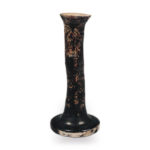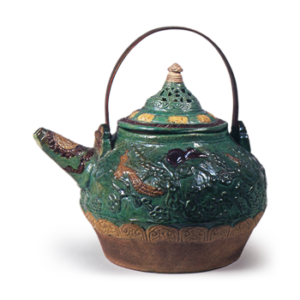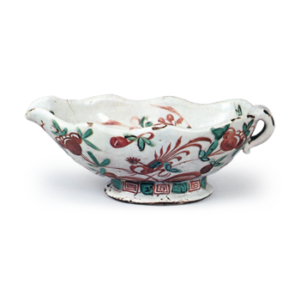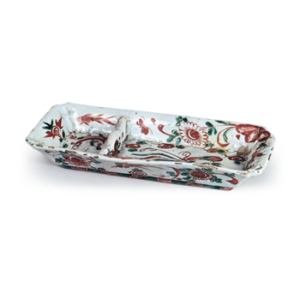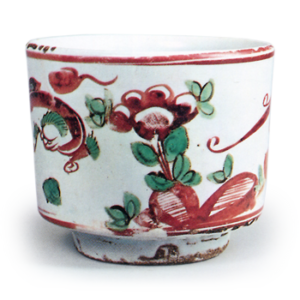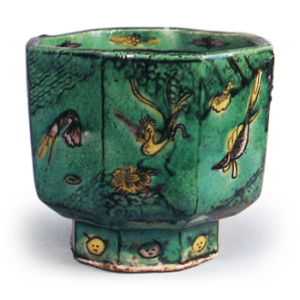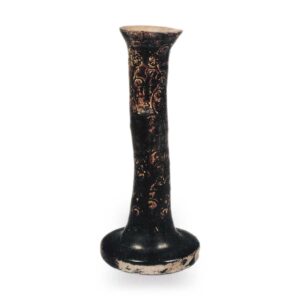
Excavated from Shimizuden Kiln, Higashiyamaji-cho, Seto City, Aichi Prefecture, Japan
14th century
Height (estimated) 21.0cm, Top diameter 5.7cm, Bottom diameter 8.8cm
Kosedo candlesticks are thought to have appeared during the peak of Kosedo at the end of the Kamakura period (1185-1333), but examples are extremely rare, and their production did not increase until the Muromachi period (1333-1573). At that time, the wax wax was made from imported dense or pine resin, but it was very scarce and used only by the upper class, and it is thought that kerosene was used by the general public in dishes. From the end of the Kamakura period to the Muromachi period, Kosedo candlesticks were divided into several types based on differences in detail, but they can be broadly classified into two types: those with a flat base, the tip of which is expanded to form a recess for the wax receptacle, and those with a stable base with a cup at the upper end, and a blood-like part for the wax receptacle attached slightly below the foot of the base. The former is of the Kamakura style. The former can be called the Kamakura style and the latter the Muromachi style. This piece was made in the late Kamakura period (1185-1333), at the height of the Koseto period. It is water-ground and decorated with an arabesque design of flowers and chrysanthemums on a stick-shaped section, with a thick coating of blackish brown iron glaze on the outer surface. It is one of the few good examples of old style candlesticks.

